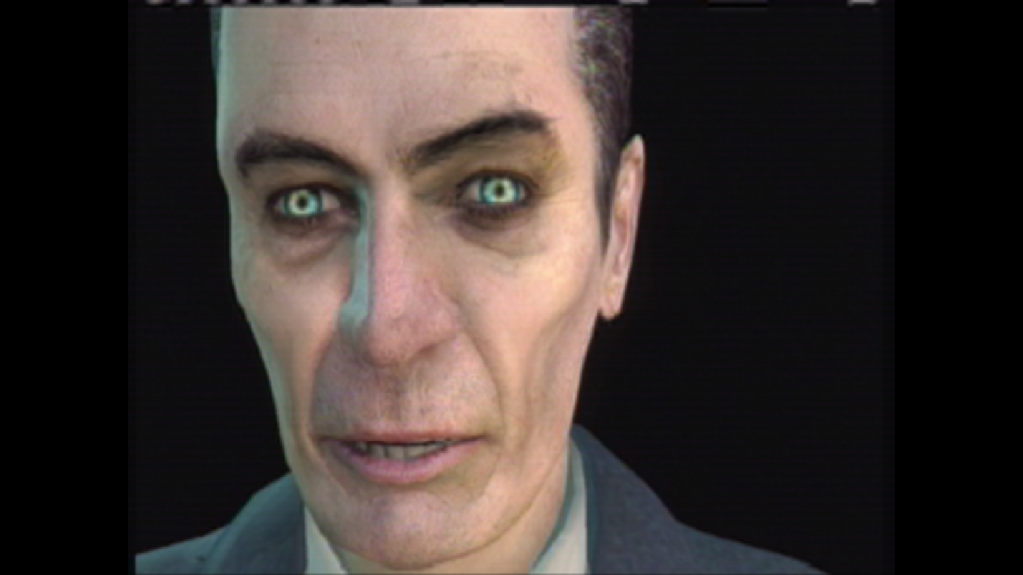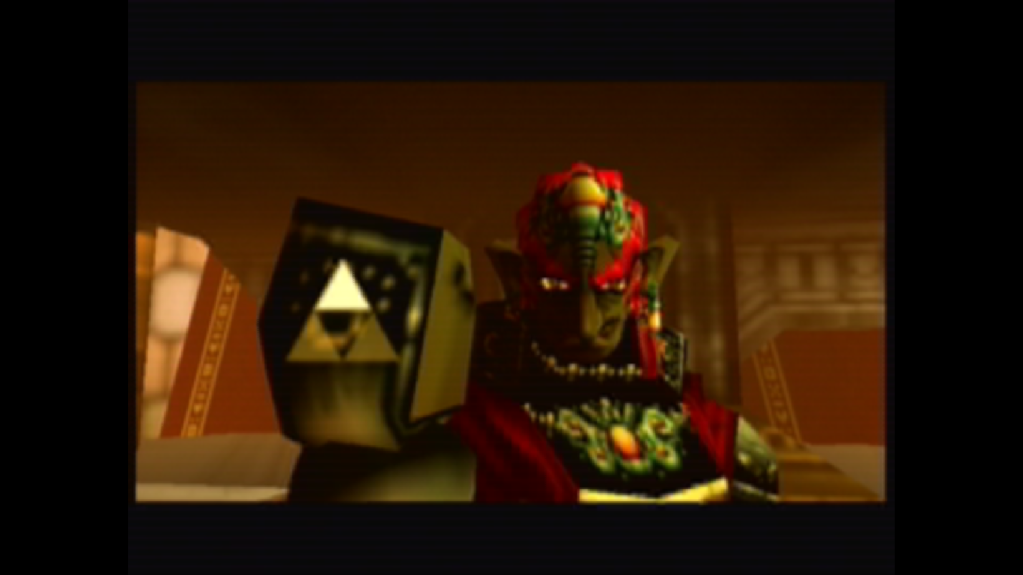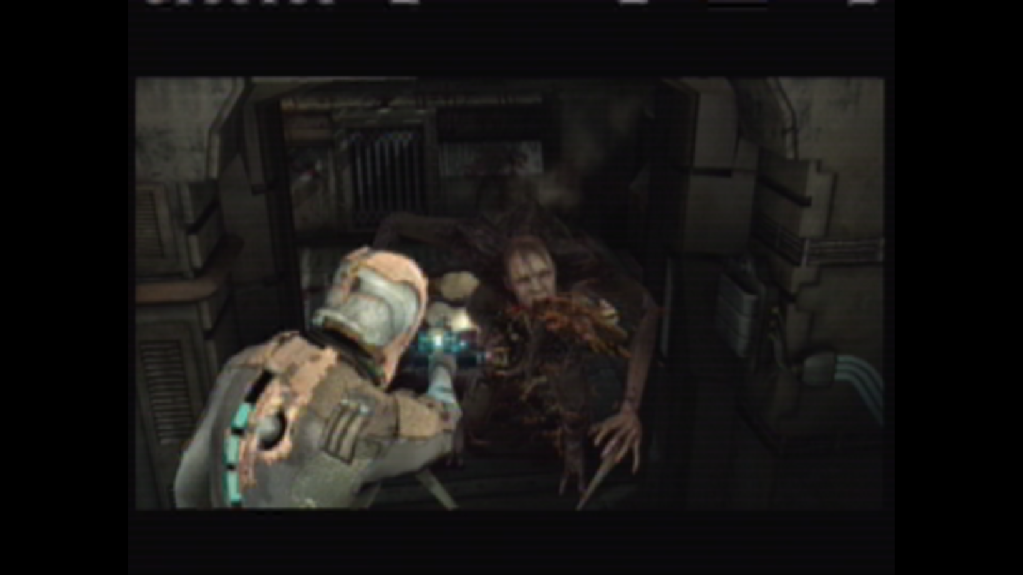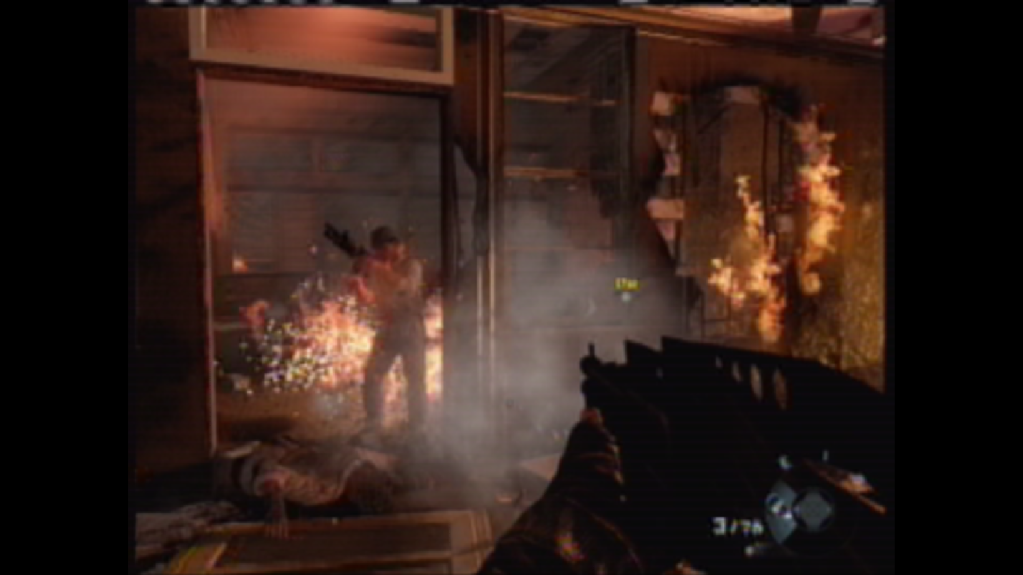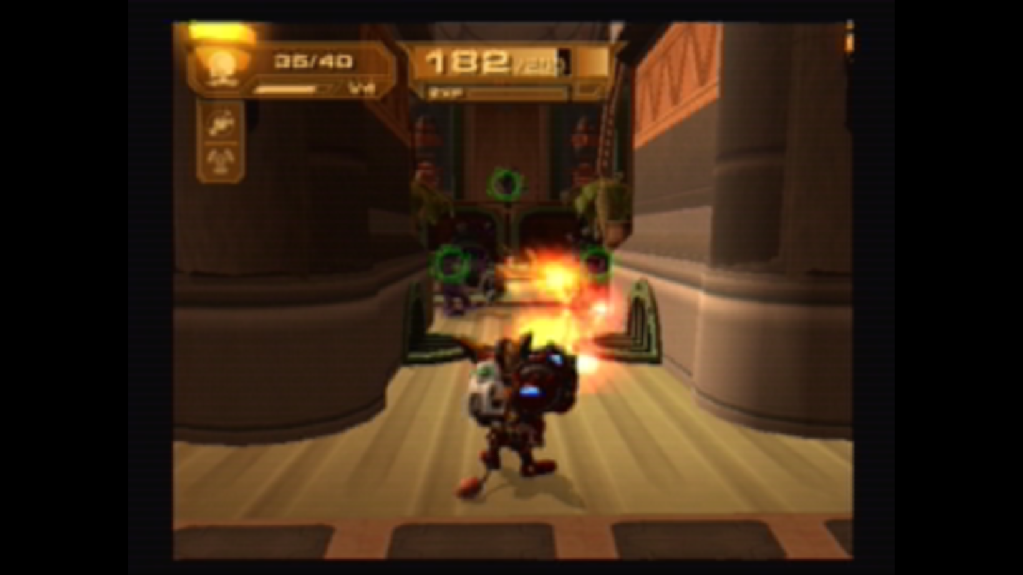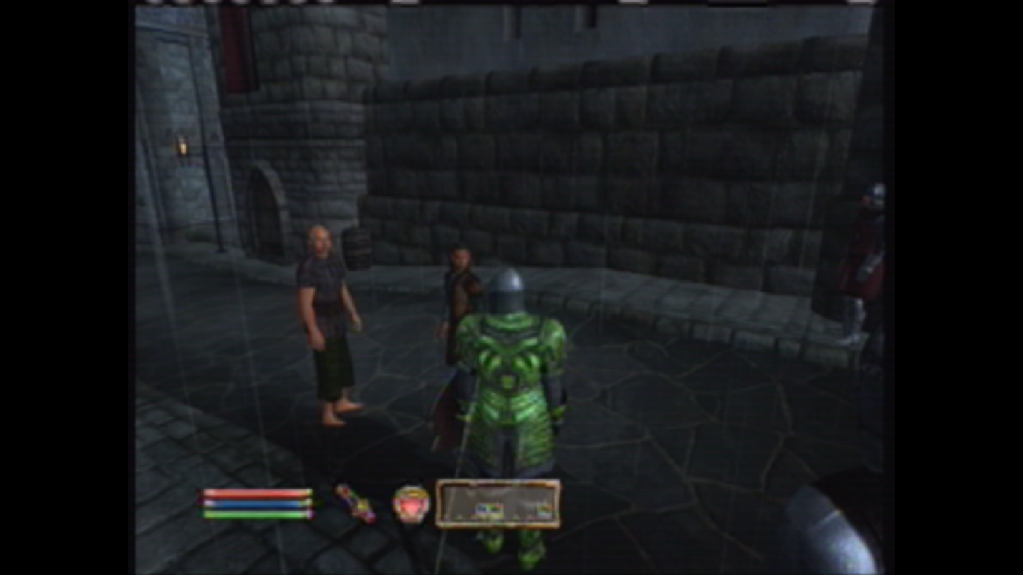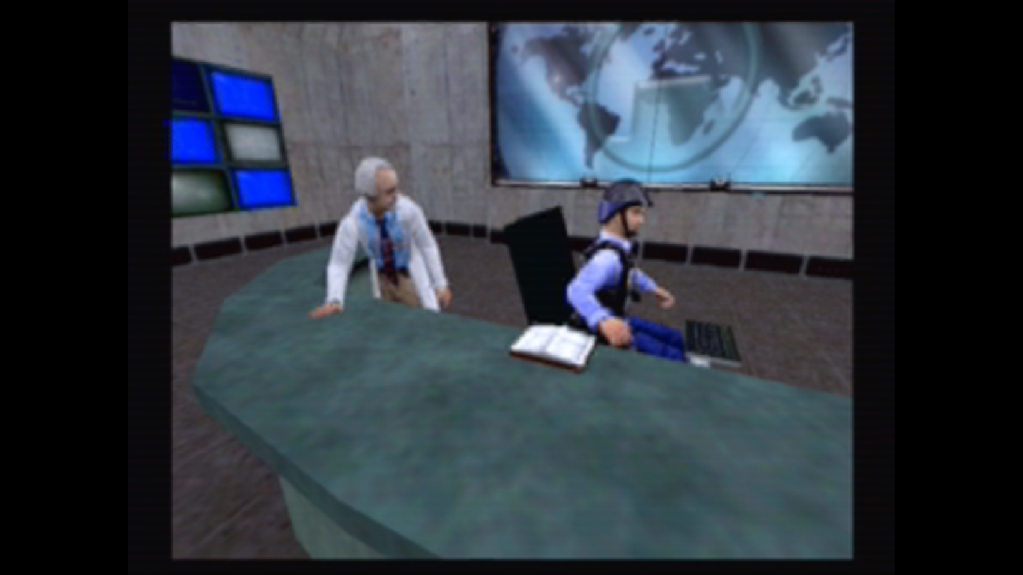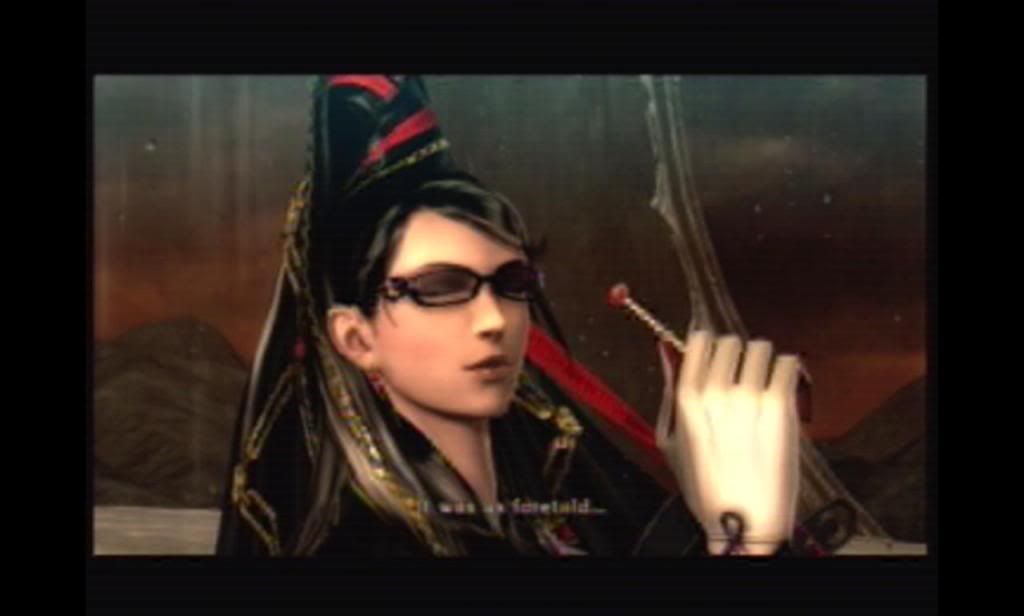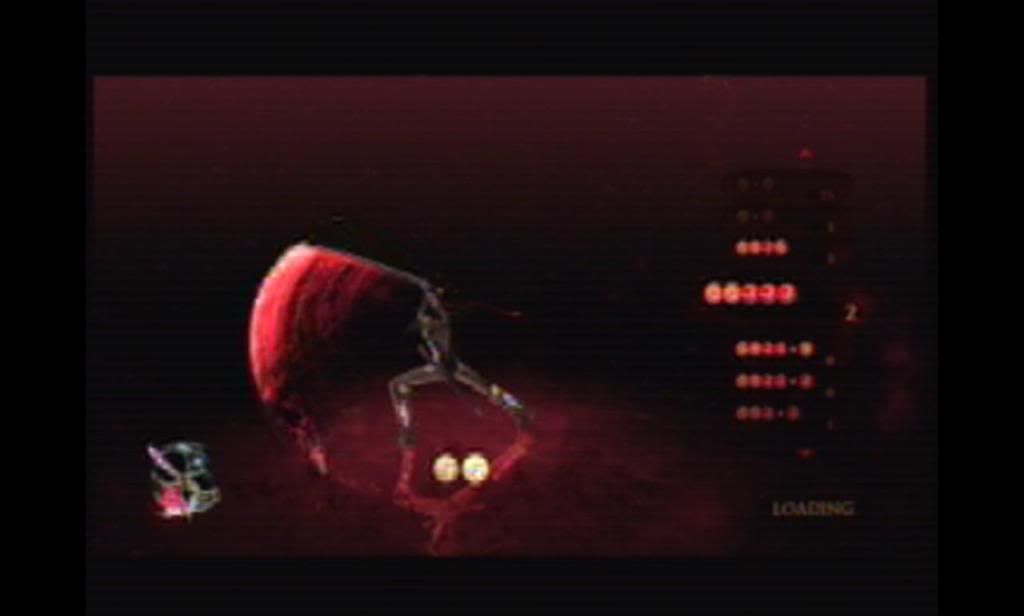Videogames, despite their escalating popularity, are still something of an enigma to the consumer. Is gaming, as a hobby, justified? Do videogames enrich the player on any level, or are they simply indulgences? Are they harmful to children? Do they send implied messages about murder, violence and drugs? Have they any artistic merit?
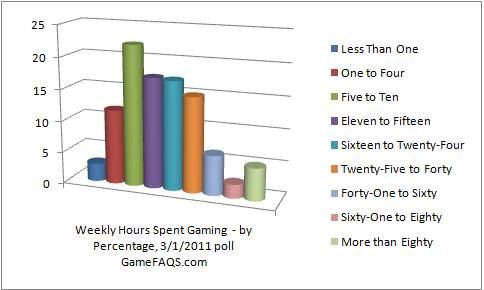 |
| According to GameFAQS.com's Poll of the Day, visitors to the site invest quite a bit of time into playing games. |
All of these are valid questions, and in an age saturated with media entertainment, very important ones. Videogames, despite bad press and the public’s lack of their understanding of their complexity and influence, as a medium have not only displayed their ability to provide unique and engaging experiences, but also have become exceedingly relevant in modern culture.
Bridging the Gap
Definitions of Activity
All forms of media can settle into one or two forms of activity: engagement, entertainment, and art. The classification of various media into these categories depends upon criteria that set them apart based on aesthetic appeal and long-term messages, and classification can even fluctuate inside of a specified medium.
Things We Do For Fun
Entertainment is defined as any sort of pleasurable diversion. At its purest, entertainment is comprised of simple activities, both passive and active, that require minimal input and thought provocation for success. Entertainment shortens the tie between work and reward, and it includes the completion of simple puzzles, such as crosswords, viewing a simple movie or television episode, and listening to music. The more instantly satisfying an activity is, the more it favors entertainment instead of engagement or art. A case may be made that classical music is less entertaining than pop radio because it requires patience and interpretation, or that
Despicable Me (2010)8 is more entertaining than
The Godfather (1972)8 because it requires less contextual understanding prior to viewing.
When The Going Get Tough...
Engagement is defined as any task requiring effort, causing mental or physical taxation. These include activities like playing sports, working at a job, and partaking in complex puzzles like Sudoku or jigsaw. Engagement challenges a consumer to exercise the mind or body, and requires willpower to stay through until completion. Some forms of entertainment contain elements of engagement, depending on their complexity and their provocation. Mystery-based, episodic programs such as
Lost, (2004)(1) or educational programming from
The History Channel or
Discovery can be engaging because they inspire discussion and deliberation, as opposed to simpler, sensationalist programming that provokes no thought from the viewer that remains closer to being purely entertaining.

An Ever-Present Debate
The last class of media is art, which is defined as any form of expression on behalf of the creator. Art elicits, or attempts to elicit emotion, and remains a purely passive experience at its purest. Painting and other visual art is basically the only pure example. While entertainment and engagement are sort of opposites, as most examples subject to classification will likely satisfy one more than the other, artistic merit stands separate. The magnitude of the artistry is contingent upon its capacity to elicit the intended emotions from the viewer. A case could be made that much classical music, with its deliberate crescendo, climax and release formula that can take up to an hour to complete, is more artistic than pop music because it elicits emotions more effectively. Also, thought-provoking, reflective, or classical literature with their varieties of themes and encompassing character casts may be considered more artistic than some pop reading and periodicals, which often capitalize on readers with indulgence and rapid tension and release.
Activity in Videogames
Videogames are unique as a medium because they have the potential to fully satisfy all three forms of activity simultaneously, without sacrificing elements to compromise one another.
A consistent gaming franchise that has been on the market for almost 25 years is
The Legend of Zelda, and it exemplifies engagement inside of a videogame. Engagement being defined as requiring effort and taxation, the
Legend of Zelda titles, which span many different gaming platforms, uses elegant puzzle design and maze-like dungeons to challenge a player. An ever-expanding inventory of tools and weapons becomes available to a player throughout the game, and a player needs to match the right tool for the right task. As a
Legend of Zelda game progresses, the puzzles become more complex as every dungeon requires more tools to complete its puzzles.
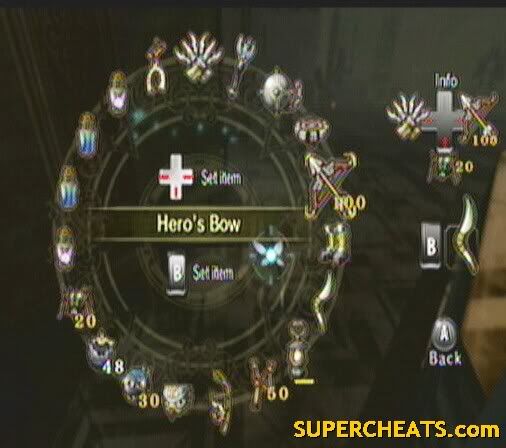 |
| Just imagine... every tool serves a handful of purposes. |
Gameplay in this franchise is comprised of exploration of the overworld, which serves as a hub, interspersed by completion of dungeons. The past few installments all have, thanks to technological advances, dungeons laid out like a three-dimensional maze. A player is required to pay careful attention to key landmarks inside of a dungeon to progress, and complex puzzles award completion with forward progress and exploration. The combat in a
Legend of Zelda game is also complex, often serving as a puzzle in itself, except the penalty for failure is death of the protagonist and having to start at the beginning of the dungeon. Combat in these games requires players to think on their feet to attack while remaining coordinated enough to stay out of danger as often as possible.
A franchise that best pure entertainment in gaming is
Call of Duty, specifically the online multiplayer component. Simple core gameplay mechanics comprised of pointing and shooting keep the path from work to reward very short. While the potential exists in multiplayer games for coordination and strategy with teammates, these elements are optional and initiated by the player, and even critical failure is still rewarded with some forward progress through the multiplayer’s leveling component.
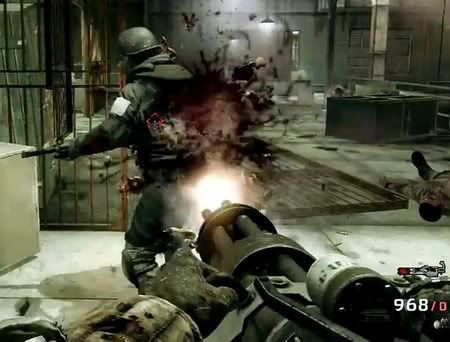 |
| Call of Duty is pretty simple: point, shoot, repeat. Entertainment at its purest. |
In addition to simple point-and-shoot mechanics, a player is given incentive to play constantly, with an amalgamation of awards and upgrades constantly at the player’s fingertips. By participating in games, killing enemies, and completing objectives, players are rewarded with experience points that are used to upgrade their online persona with more gear, decoration and weaponry. While the format for upgrading changes slightly with each installment, at its core it remains unchanged. Radar jammers, tactical grenades, bombs, laser sights, grenade launchers, new camouflage designs, and abilities to run, reload and climb faster are all at a player’s disposal with a bit of input. Such gear and abilities serve as long-term incentive to continue playing for extended sessions over months or years, and diehard players are rewarded with special commendations and decorations.
Art, being defined as the capacity to elicit emotions and express creativity and originality, is exemplified in two unique games. While games that elicit emotions other than excitement or frustration are much less common, they are not altogether rare, though often are not nearly as popular as exciting games. The first example is
Shadow of the Colossus, (2005)(1) a game which pits the player against sixteen giant beasts, which are all encountered individually, in a vast, but deserted landscape. While toppling giants is not an uncommon element in popular videogames, the presentation in
Shadow of the Colossus sets it apart from the crowd. Any sort of player interaction is all but absent until the game’s heartwrenching climax, leaving the player in hours of gameplay with complete solitude outside of the sixteen beasts.
 |
| "Some mountains are scaled. Others are slain." |
Cutscenes explaining character growth and motivation are all but absent, leaving the lore to a player’s interpretation, and a complete lack of closure by the game’s ending keeps the game as enigmatic as before it was played.
Shadow of the Colossus inspires wonder and loneliness as a player explores the vast landscape in complete solitude but for the accompanying horse and the giants, as well as a unique blend of excitement and dread thanks to the impressive size of the colossi.
A second game to elicit emotions effectively is
Silent Hill 2, (2001)(1) a story-driven horror game about an everyday man receiving a letter in the mail from his dead wife, inviting him to the titular town.
Silent Hill 2 is the story of that man and the torment he experiences in the haunted town, and it is a unique game in the breed of fear it inspires. Actual, intentional scares are few and far between, replaced instead with a permeating, relentless stress and constant dread. Truly, this game is quite the experience to behold, especially at night while receiving the sound through headphones. While the context of the game provides a perpetual chill, the evolution of the protagonist and cast of characters inspire pity, wonder, and disgust depending on the character.
 |
| Angela, a restless soul, struggles with her past of neglect and abuse. |
In addition to its aforementioned virtues,
Silent Hill 2 deals with subject matter that to this day is rarely so tastefully and subtly confronted in videogames, music, movies and other media. Each character in the game personifies a different aspect of guilt, and though the reasons for this are left for the player’s interpretation, they are very urgent matters. Eddie, a young man, is a victim of brutal bullying, and his evolution through the game is disturbing. Angela is a victim of extreme parental abuse and neglect, though it is never addressed forthright and only implied through visceral context. The protagonist, the everyman named James, leads a player to utter disgust by the end of the game as he confronts his manifested fears.
Released in 2001(1),
Final Fantasy X is a great example of a videogame breaking the mold and exceeding expectations in art, entertainment and engagement. While many games could satisfy this game study,
Final Fantasy X was chosen for its uniqueness to its genre, emotive themes, timeless gameplay, varied soundtrack, and stand-alone visual style. Critical praise, commercial success, and ongoing popularity ensure that
Final Fantasy X is a game of high production standards and exceeds the criteria for being art, engaging, and entertaining simultaneously.
With respect to artistic merit, the game is visually compelling at every turn. The character designs are each unique, with every protagonist delivering a unique appearance. Non-playable characters carry styles and behavioral mannerisms unique to their region and generation, and the villains and beasts of the land are all very distinct from one another. The fact that the land of Spira in which the narrative takes place is entirely fictitious adds to the magnitude of its endearment. Landscapes vary with the progression of the plot, as the protagonists travel around the world of Spira. From the tranquility of Besaid Island to the treacherous Thunder Plains, the vast Calm Lands to the intimidating Mount Gagazet, the landscapes take the visual style of a moving portrait.
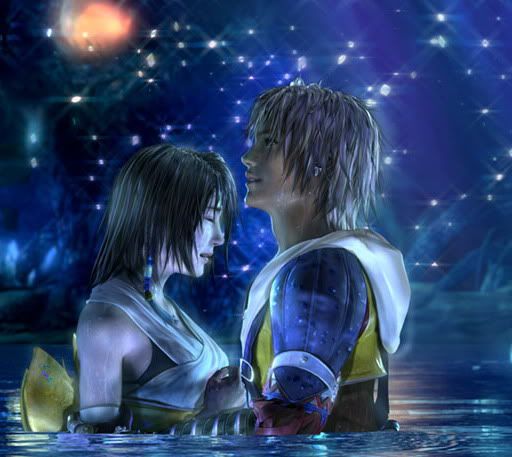 |
| Final Fantasy X is a story about love, friendship, trust and sacrifice presented with awe-inspiring visuals, and it keeps a player hooked with solid, consistent gameplay mechanics. |
The soundtrack is also especially memorable. Matching each setting and battle aesthetically, the music encompasses many genres and magnitudes.
Nobuo Uematsu, then -Squaresoft’s (now
Square-Enix) composer and musical director is able to express wonder, dread, love, anger, intensity and the whole range of human emotions adequately to match the scene and setting of the game.
Final Fantasy X boasts a soundtrack that is celebrated even ten years after the game’s release, with many of the game’s
tracks being featured on Youtube.com and boasting tens of thousands of views.
The plot of
Final Fantasy X, while justifying the title "fantasy," stays relevant with believable characters in dire circumstances. Themes of friendship, love and guardianship envelop a player in the tale. Expressed in many hours’ worth of dialogue, description, and visually striking cutscenes, the game that mandates a 50-hour commitment to reach its finale rewards players with a rich, detailed and consistent story brought to life by an empathetic cast of characters.
With respect to engagement, the play of the game is focused on turn-based battles, strategic management of upgrades, and puzzles based on maze-like dungeons and tiles. The turn-based format is traditional to role-playing games (
RPGs) and began many decades ago with tabletop games like
Dungeons and Dragons. Many videogames have been witness to the evolution of turn-based battles.
Final Fantasy X utilizes largely traditional turn-based strategy, with a party composed of the player’s characters taking turns with various villains and enemies as they exchange blows, cast spells, and heal. As is tradition, turn order and frequency is dictated by an individual character’s speed rating. As is custom among turn-based RPGs, a player must wisely prioritize attacking enemies, enhancing allies, and healing to successfully complete the tasks at hand.
In terms of pure entertainment,
Final Fantasy X is a delightful distraction. The narrative moves along at a brisk pace, and all cutscenes feature high production values utilizing the aforementioned colorful, detailed characters and inspired landscapes. The game constantly provides incentive to players so that they keep playing. The “Sphere Grid” upgrade system is constantly rewarding players with upgrades, and leveling occurs at many times the frequency that other games allow it. The high frequency of leveling allows players to stay entertained for many consecutive battles, while constantly allowing the player to upgrade.
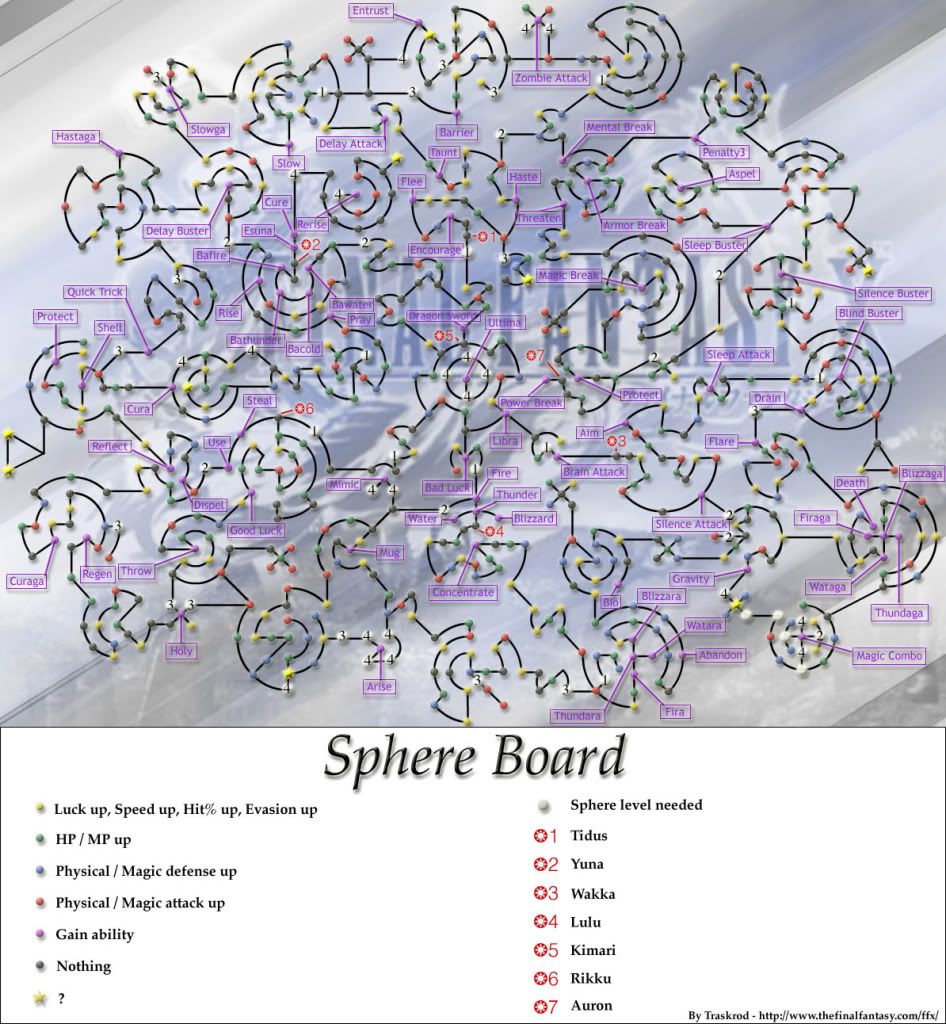 |
| As they gain experience through battles, players upgrade the party by navigating around the sphere grid |
A great many games satisfy the criteria to be classified as high quality art, pleasant entertainment, and endearingly engaging,
Final Fantasy X not being the least among them. Many players reflect upon the time they spent playing this game, which is often 60 to 80 hours, with fondness.
Final Fantasy X is a great example of how videogames are able to be a great activity with a brag-worthy payoff, and in doing so shows that the medium of videogames have great potential to exceed expectations and established norms.
Videogames Functioning As Contemporary Literature
Much of literature and cinema captures and personifies a time and place. Well-respected and timeless works of literature vividly express the conflicts of ideals of a region during a specific era, as well as personifying these conflicts with believable characters. Timeless themes permeate favorite books and movies as they are passed along generations.
Literature As We Accept It
Great Expectations (1861) captures a busy England during its Industrial Revolution. Charles Dickens, the author, draws from his experiences during his lonely childhood to color his world in this novel(5). Pip, the protagonist, deals with internal conflict as his dreams of wealth, security, and love compromise his affection for his adoptive family, particularly his brother-in-law, Joe Gargery. Dickens builds a believable cast of characters, and inspires readers to ponder to what extent we might pursue our own dreams, and what contexts might inspire such a pursuit. The novel is sort of a told fantasy of every person, as the orphan child stumbles upon great wealth provisioned from a mysterious benefactor. Great Expectations captures and personifies an infantile Industrial England, rife with poverty and exploitation.
It’s A Wonderful Life, (1946)(1) produced and directed by Frank Capra, personifies the World War II generation through everyman George Bailey, played by James Stewart. Depictions of the hardships of the Great Depression are present, as is life at home during World War II. The context of this movie was contemporary with its filming, allowing everybody to relate to its cast of characters, but it has served as a timeless story of the WWII generation as time goes on.
 |
| James Steward brings to life the lovable, hard-working family man George Bailey in It's a Wonderful Life. |
In 1866, Fyodor Dostoevsky issued
Crime and Punishment to a literary magazine in a 12-part series, and in doing so captured pre-revolution Russia and the swarm of political and social goings-on in the chaos of the mid and late 19th century, including ideology, westernization and theology(6). The moral dilemmas, evolution and interactions of Rodion Romanovich Raskolnikov through the novel personify the varied culture of Russia, as well as the multitude of ideals that were emerging at that time. The personal vendettas and tribulations with which the protagonist dealt are detailed expressions of an entire array of human emotion.
As illustrated, these well-respected and famous works of literature and cinema capture cultures that are unique to their time and place. Videogames have accomplished the same feat, sometimes with more subtlety than other times, and still show great potential for evolving this concept.
Final Fantasy VII: A Commentary on 1990s Social Issues
Final Fantasy VII (1997)(1) is a role-playing game in a fictitious world with colorful, outrageous characters and villains. While it was a commercial and critical success for its impressive-for-the-time computer animated graphics, a unique battle system and upgrade capabilities, as well as an intriguing and varied narrative, many elements of its plot were inspired by real-world controversies and events.
Capturing the goings-on of the 1990s, Squaresoft’s
Final Fantasy VII illustrates the gravity of resource depletion in the wake of the green movement, the chaos inspired by corporate and political corruption, and the unclear ethical boundaries of genetic manipulation. By weaving the narrative into the context of the story, each of these controversies are illustrated.
The setting of the game is an entirely fictional universe, on a planet whose natural resource pool is referred to as the “Lifestream.” The Lifestream is not only the natural resource pool, but also a “life pool” so to speak, with each life on the planet being a manifestation of the Lifestream(2). This in an exaggerated form of the process of metamorphosis which transforms organic matter into crude oil, which is then refined into marketable goods, and resonated with the environmentalism of the 1990s, a time when 76% of Americans identified as envrionmentalists(3). The narrative of the game includes the player in activism against the Shinra company, a fictitious corporate entity that mines and refines the Lifestream of the planet and deprives the protagonist’s home city of natural aesthetics in the process. The activist element of the narrative personifies the environmental concerns that were present in headlines in the 1990s.
Final Fantasy VII also carries with it some issues about genetic manipulation. In July of 1996, the first animal to be successfully cloned was born and was revealed to the world in February of 1997(4), nearly parallel to the American release of
Final Fantasy VII. While the technology for genetic research was hitting stride and the mapping of the human genome neared its completion, genes and all their implications dominated headlines. Sephiroth, the main antagonist of
Final Fantasy VII, personifies much of the controversy surrounding genetic research.
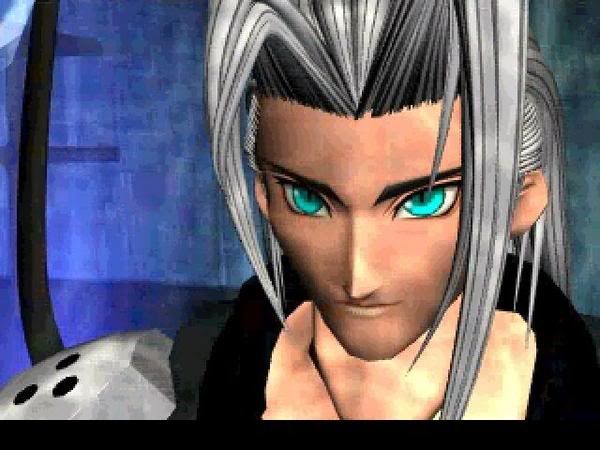 |
| Sephiroth and his ambitions are inspired by social issues that emerged during the 1990s. |
The question of
human cloning has been hotly contested since it appeared to be technically feasible. Scientists and activists alike often deem producing a human clone “unethical.” Sephiroth is the product of splicing the genome of the game’s non-human, extraterrestrial race with the genes of mankind. For a significant portion of the narrative, Sephiroth is revered as a skilled soldier, positive role model and all-around team player. Being led from birth to believe that he is the last of his bloodline, the rich, historic Cetra, and that his mother died with his birth, he believes that his natural talent for battle and warfare is because of his heritage(5). When he unintentionally discovers his true identity, that he is the product of a corporately-funded experiment to produce gifted fighters, he loses his mind. Overcome with disappointment, anger, and depression, he develops a myriad of psychological ailments. In his effort to justify his existence, he attempts to exalt his power, leading to his becoming a villainous character.
While the plot of
Final Fantasy VII involves Sephiroth taking a comic-book inspired turn of creed and code, the inspiring issue remains at hand even in 2011. How would a person who is the product of an experiment deal with identity issues? Can we, as human beings, justify such a laboratory without compromising our compassion?
Dragon Age: Origins: Reflecting on Modern Spiritual Diversity
BioWare’s 2009(1) large-scale role-playing game
Dragon Age: Origins uses real-world elements of spiritual contest to color its narrative. BioWare utilizes the unique potential for interactivity to allow a player a high degree of flexibility in shaping their own narrative. Theology is a very pertinent component of the tale, and
Dragon Age gives the player very true-to-life circumstances in which to make their plot-related choices.
The main religion in the fictional land of Ferelden is very much an intentional parallel to Christianity. “The Maker” sends a prophet to the land to die in a battle and permit all who die to rest with “The Maker” after their death, which is much akin to the canon of Christianity. Similarly to modern Christianity, the context for the lore of the religion is many centuries old, and skepticism and dissent arrive in many forms, from different religions and cults, to atheism and agnosticism.
What makes
Dragon Age: Origins unique with its theological implications is that no one choice is given as being “good” or “bad” and a player can save the land from imminent threats without ever formally declaring their support to one religion or another. The protagonist is entirely customizable from the beginning to the end, and the player has choices over every aspect of their virtual identity. The cast of characters that surround the protagonist within the game are varied in their beliefs, convictions and creeds to keep theological themes minimally biased, and each character will freely express their approval or disapproval of the player’s choice of action.
 |
| Dragon Age: Origins immerses players in a world with conflicting philosophies and religions, and provides the player with in-game feedback for every choice that is made. |
While many videogames feature spiritual implications and symbolism,
Dragon Age: Origins features an element of ambiguity which mimics modern America. “The Maker” is never physically presented outright as an existent being, which is a popular modern argument against theism(8). In this way, not only is the narrative subject to a player’s manipulation, but it is also a commentary on the current state of dispute in the spiritual arena of our culture.
What Have We Learned??
Videogames are an emerging form of entertainment, and a growing industry. As gaming permeates every platform from social network sites to mobile phones, it is becoming increasingly relevant, and a greater understanding is needed. Just as any medium of expression, products exist which may enrich or diminish our enjoyment of life. In a culture saturated with media, it is important to make wise choices about how to spend one’s time when being exposed to media. Videogames provide a wide array of experiences, including epic narratives, commitment, frustration, and the thrill of victory. Just like one has the choice to watch enriching television programs like documentaries as opposed to game shows, a player can choose between indulgent games and challenging, sophisticated games.
Gaming is a medium which permits the developers to create experiences which are both engaging and entertaining, while lathering the whole experience in a luscious art style. Neither art nor entertainment nor engagement need be sacrificed in order to make a polished product, as videogames need not favor one of the three activities in order to create a high-quality product. Videogames have shown much growth since the debut of
Asteroids in 1979(1), and retain the potential for maturation as it grows as a favored pastime around the world.
References
1. Internet Movie Database http://www.imdb.com/
2. Final Fantasy VII http://finalfantasy.wikia.com/wiki/Final_Fantasy_VII Retrieved 3/20/2011
3. Dr. Kovarik, William Environmental History Timeline Radford University http://www.radford.edu/~wkovarik/envhist/
4. 1997: Dolly the Sheep is Cloned BBC News Last updated 2008 http://news.bbc.co.uk/onthisday/hi/dates/stories/february/22/newsid_4245000/4245877.stm
5. Sephiroth http://finalfantasy.wikia.com/wiki/Sephiroth Retrieved 3/21/2011
6. Kim, Sonia. Pip’s Playing at Life Brown University, 2009 http://www.victorianweb.org/authors/dickens/ge/kim6.html
7. Morson, Gary Saul Russian Literature Encyclopedia Britannica
8. Drange, Theodore M. Atheism, Agnosticism, Noncognitivism The Secular Web 1998 http://www.infidels.org/library/modern/theodore_drange/definition.html
"Survivor" logo from
www.blindgossip.com
Soccer picture from
www.erschools.com
Legend of Zelda inventory from
www.supercheats.com
Call of Duty screen from
techpinger.com
Shadow of the Colossus screen from
www.inquisitr.com
Besaid Island visual from
answer.mmosite.com
Sphere Grid from
www.ffodyssey.com
George Bailey from
www.dvdbeaver.com
Sephiroth screen from
www.comicvine.com
Dragon Age screen from
www.ign.com
